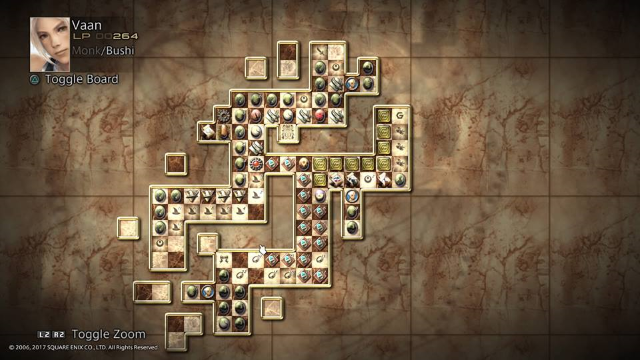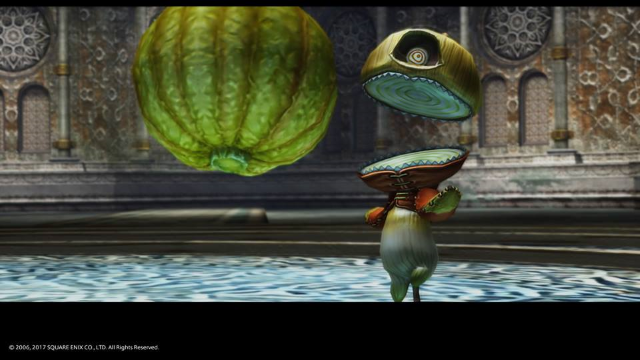If there was one game that really and truly disappointed me on the PlayStation 2, it was the original release of Final Fantasy 12.
That’s not a great way to start a review, but it’s the truth. I, like many others at the time, expected something different and a little more traditional after the series veered into MMORPG territory with Final Fantasy 11.
Final Fantasy 12 didn’t use a traditional turn-based system, the plot was immemorable and convoluted, and the game’s slow speed overall made its huge dungeons a test in tedium. That was my opinion then and it’s still my opinion now: The original version of the game was not very good.
But here we are in 2017, and I’m giving The Zodiac Age a full-on 9. How could this happen?
Improved twice over
Surely you’ve heard of something being “ahead of its time”, and in some ways the original game was just that… at least in the combat department.
See, The Zodiac Age is not FF12‘s first revamp. It itself is actually a remaster of a previously Japan-only version of the game (International Zodiac job System version — or IZJS) that came out in 2007 and had almost all the bells and whistles seen in this newest release. At least, it had the majority of the functional ones.
IZJS contained all the job classes, new Gambits, equipment tweaks, new weapons, New Game+ and – modes, Trial Mode, and speed up button back in 2007. The additions and changes were simply staggering at the time and changed the game completely, from a slog to a joy to play.
 Jelly grinding at 4x speed is great.
Jelly grinding at 4x speed is great.
These additions in IZJS have been brought over to TZA, with some even more welcome features and improvements. An overlay map so you don’t have to open the full map every 20 seconds, the addition of second classes for each character, a reorchestrated soundtrack, enemy balancing, cleaned-up visuals, and the removal of the spell buffering that made mages less than ideal in the original and IZJS.
The Zodiac Age is a brand new game when compared to the original Final Fantasy 12, and deserves to be remembered as the true twelfth mainline entry to the series rather than the original release.
Jobs, Licenses and Gambits
For those uninitiated, Final Fantasy 12: The Zodiac Age‘s combat system may seem strange. It’s a sort of hybrid between the classic turn-based menu battle system and real time combat, with a bigger focus on menus.
The player can only directly control one character at a time, with that character and the other two in the party functioning based off Gambits, which the player sets up to suit their playstyle and the situation. The combat system was one of the fanbase’s biggest complaints about the original game with criticisms that it “played itself” but that was not the case then and certainly is not now.
One could easily claim that Final Fantasy 12‘s battle system has gotten better with age, but much of that boils down to perception when comparing today’s JRPGs to those of a decade ago — plus the speed up function makes the game several times more enjoyable.
The License system from the original release is still intact, but here in The Zodiac Age each character chooses jobs instead of everyone working with the same License board. Each foe kill grants License Points (LP) you can put toward learning to use new Magicks, Technicks, passives, and equipment.

Each character can choose two jobs, which are permanently chosen once locked in. You start with one and unlock the ability to use a second once you’ve progressed the story to a certain point.
The job system was one of my personal biggest draws to the IZJS release and is a pretty big draw in The Zodiac Age as well, as it serves as the game’s primary source of character customization. With 12 total jobs, two to a character, there is a lot of room for playstyle customization.
Living in The Zodiac Age
This version of the game has some unique rebalancing compared to its predecessor, specifically in the foe difficulty department.
Players of both the original Final Fantasy 12 and IZJS will notice the game is much easier than either previous iterations. For some that may sound good, but it makes it so you finish the game at a much lower level than before and boss fights, which were once a real challenge, don’t require a lot of effort outside the optional high-tier Marks and Esper fights.
The game’s hardcore challenges lie in Trial Mode and New Game- (Weak) Mode. Players must complete Trial Mode to unlock Weak Mode, which starts every character at a single-digit level and keeps them there for the entire game.
But those who want to play through again and feel like a monster can similarly complete the game and run through it again on New Game+ (Strong) Mode, which starts each character at level 90 to run through the game with ease.
Most remaster releases simply bring visual and audio improvements, and while The Zodiac Age‘s improvements and additions go far past that point, it does look and sound significantly better than the original release.

The game’s textures look great with few low-res textures found, everything looks crisp, and the PlayStation 2 character models hold up surprisingly well. Visually it’s a modest improvement, though one could certainly complain about the motion blur in many cutscenes.
If the above sounds a bit lukewarm, it’s only because the reorchestrated soundtrack is so much of an improvement over the original that it completely takes the cake. I don’t enter an area and think, “Wow, this looks great,” I enter a new area and think, “Wow, this sounds amazing!” You can choose to listen to the original soundtrack instead, but why would you? The reorchestrated one is simply better with zero contest. It is absolutely fantastic.
Solidifying Final Fantasy 12‘s place in the series
Final Fantasy 12, whether a decade ago or now with The Zodiac Age, has never been known for having a fantastic plot. Much like the other black sheep of the series, Final Fantasy 5, all the draw is on the job system and the gameplay.
The world of Ivalice as it is in this game is the most fleshed out of any game featuring Ivalice as a setting, despite the game’s actual plot going terribly awry somewhere past the halfway point. That is why this review is not a 10/10 — because the plot is just as broken and uninteresting as it was a decade ago.
With all of the improvements in this newest version, there’s something new for those who played the original game and a whole new world for first timers. With a little light strategy in the mix with the Gambit system and a ton of side content to tackle, Final Fantasy XII: The Zodiac Age is the most solid and worthy version of a game that has been otherwise forgotten.
This is one of those games you come to for the gameplay and skip through the cutscenes, at least on your second playthrough. The Zodiac Age is easily my favorite Final Fantasy game in a very long time, even if I’ve already owned the IZJS version for nearly a decade. It is simply too fun, too beautiful, and too expansive to pass up.
Note: Writer was granted a review copy from the publisher.







Published: Jul 9, 2017 05:29 pm